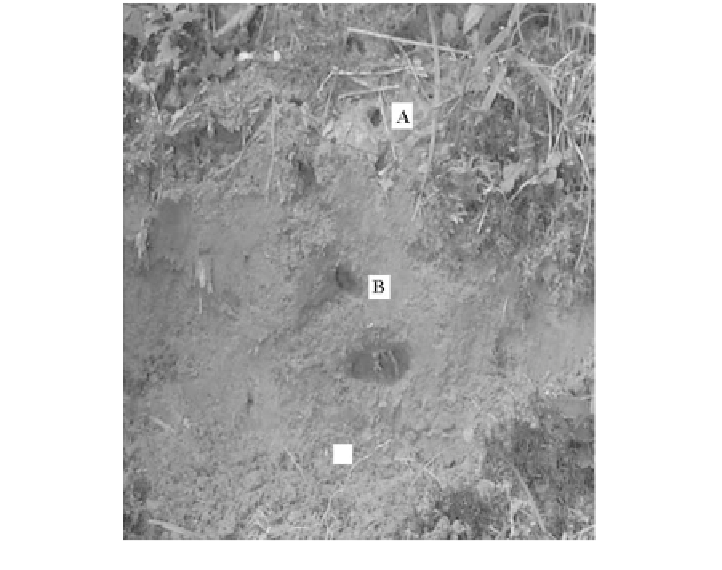Agriculture Reference
In-Depth Information
A
B
C
Figure 3.2.
An ant colony:
A
is soil brought to surface by ants,
B
is ant holes in the subsurface,
C
is a grub found at of about 10 cm.
The movement of animals through soil and their deposition of organic
matter can dramatically affect the soil's structure. As explained in Chapter 2,
pushing together soil separates results in the formation of peds, increasing air
and water movement through soil and changing the oxidation-reduction con-
ditions and the inorganic and organic species present. Animals, such as worms,
which ingest soil solid inorganic particles as they move through soil, cause the
degradation and rounding of these particles, and thus have a direct effect on
soil inorganic solid components.
Deposition of organic matter will affect areas under and around the depo-
sition. The primary effects are increased microbial activity, increased carbon
dioxide, and decreased oxygen content as well as dissolution of molecules into
the soil solution. There are also secondary effects caused by the interaction of
these molecules with both the inorganic and organic components present.
Organic molecules may “dissolve” in the existing soil organic matter. They
may also form complexes with inorganic constituents, such as chleate
metals present on soil particle surfaces and in the soil solution. Thus, soil
samples taken from an area of high animal activity will constitute a matrix
that is significantly different from soil taken from an area of low animal
activity.


